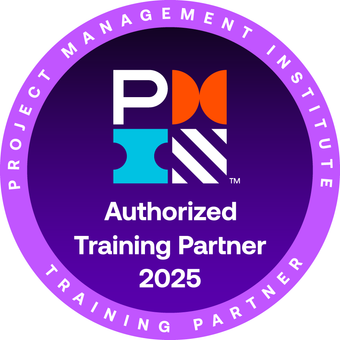Welcome back to the IMPACT PMO Leader Mindset Series. We started this series by setting the stage for the IMPACT PMO Leader Mindset by looking at the reality that many of us face as PMO leaders today. We touched on where PMOs and the industry are now, and we even began to explore what to do about the shifts that are happening in the industry. You can read that introduction here.
Last week, we talked about secret #1, Instill Focus to drive high-IMPACT. You can read that here.
This week we are moving on from Instill Focus, to the second secret of IMPACT PMO Leaders, Measure Outcomes. It’s time to redefine success for our PMO and projects.
Measure Outcomes
IMPACT PMO Leaders understand that measuring progress is not sufficient. We’ve got to know that we have achieved the intended outcomes in a way that is driving high-IMPACT.
Today, so many PMO leaders define their success by the success of their projects, but that’s only part of the success story for a PMO and we may not even be telling that part quite right. There’s a difference between the success of your projects and the IMPACT the PMO is making overall, depending on the capabilities and services the PMO delivers.
There’s also a huge disparity in how we many PMO leaders are defining success even with our projects. Often, success is being defined by how much work is happening, how much money is being spent, or how much overall progress is being made. We confuse progress with outcomes and assume that just because we are busy, just because we are making progress, we are successful. That’s not the case. Progress does not equal IMPACT.

We need to look at redefining success in terms of the IMPACT we are making with our PMO and the IMPACT we achieve with our projects. We also need to develop metrics unique to the PMO that track PMO progress and IMPACT, separate from project delivery.
Understand that EVM is not Enough
Ironically, Earned Value Management (EVM) doesn’t measure value. EVM measures schedule performance and cost performance, but it doesn’t really tell you anything about value and it certainly doesn’t tell you anything about IMPACT. It doesn’t measure actual outcomes and whether those were achieved. Therein lies the challenge. EVM alone cannot tell your business leaders if they are going to achieve high-IMPACT business outcomes for the work that was done, only if that work will be done according to what you expect/planned from a cost and schedule perspective.
Here’s a simple example. Let’s say your project was to implement a new system. The reason (your project “Why”) the system is being implemented is to create a new revenue source for the organization. Your project team diligently delivers all the defined scope, according to the originally determined timeline, and even does all the work under budget. Once the system is live, everyone expects this big bang on that new revenue, but it doesn’t come. No one uses the system. It turns out that along the way, some key questions were missed that could have shifted that direction. Was the right due diligence done up front to determine if the market really needed this system? Did the project include the proper marketing and communications planning to introduce that new system to the market? When scope decisions were made, did the team go back to the business case to determine if these changes would affect the intended outcomes? The questions are countless, but the outcome is the same. The project did not realize the intended IMPACT. In the eyes of the business stakeholders, this project is a failure, even if your project team did “everything right” according to EVM.
We have to close this gap between your perception of success and theirs.
EVM is a great resource for measuring project performance, and one that I encourage you to study and apply when and how it makes sense to do so, but that’s not all we need to be measuring. We need to start measuring ROI of our projects, and the likelihood of that return being achieved throughout the life-cycle of the project, if we want to prove our worth as project managers and PMO leaders.
Think ROI Not Triple Constraint
 There are many times in many scenarios where because project managers and PMO leaders have been trained to be cost containment engines as opposed to IMPACT engines. Project managers are taught many techniques and spend a lot of energy trying to prevent anything from effecting the triple constraint. We’re always looking for ways to cut costs and not allow change in, to protect that golden triangle.
There are many times in many scenarios where because project managers and PMO leaders have been trained to be cost containment engines as opposed to IMPACT engines. Project managers are taught many techniques and spend a lot of energy trying to prevent anything from effecting the triple constraint. We’re always looking for ways to cut costs and not allow change in, to protect that golden triangle.
Well, the challenge with that is that sometimes with some projects, they won’t achieve any ROI unless the scope is modified, or the timeline is shifted. While your project team diligently delivers project scope, someone is paying attention and realizes that you won’t achieve that ROI if you don’t make a change. Now comes that battle for protecting that baseline vs. getting to intended IMPACT.
Let’s say that the project will only be worth the investment if your company is first to market. As your team is delivering scope, you learn that a competitor is going to launch a competing product next month. Your team needs to decide if they proceed with the current plan, protecting that golden triangle, or dump some scope and speed up the launch. If success is defined by being first to market, then the answer is clear. In this case, protecting the triple constraint would have made the project worthless.
How about another scenario that might even be more common? The project is delivered on time and on scope, but budget at completion was $500,000, twice as much as originally planned. The maximum intended benefit to be achieved by the project deliverables is $600,000. So, you were a success, right? Well, maybe not. First, once you consider the amount of time that was spent on this project, that money may not have been worth all of that lost time and effort, but there are might have been other projects that could have been done for that $500,000 and they might have achieved a much higher ROI. There was an opportunity cost to doing this project over those others and it hurts more than the wasted time, energy, political capital, and other banging the head against the wall activities that happened with this project.
The IMPACT PMO Leader has the mindset of an investor. They understand that change in a project is okay, and what matters most is that are you driving that high ROI outcome for the projects. You get to IMPACT.
Use Data to Support Portfolio Decisions
One of the biggest challenges that we see PMO leaders make is neglecting the data management process. Your goal is to provide the information that business leaders need to make educated and informed decisions so that you can keep everyone moving in the right strategic direction. This means that we must ensure that we have the right systems and protocols to gather the right data in the right way and that we only gather what’s needed to drive those decisions.

It is critical that we understand the importance of data accuracy and timeliness. How many times have you been in an information sharing or decision-making meeting and as the project manager is presenting information for decisions, people start saying, “Oh, well, a lot has changed since then, that data doesn’t jive with where we really are in the project now,” or, “that isn’t in alignment with what I have in my reports.” How can people possibly make any educated and informed decisions if the accuracy of the information is constantly being called into question?
A major challenge in the data management process is that many PMO leaders don’t understand the importance of data integrity. You must find ways to ensure that you are not only providing the information needed to drive decision-making, but that the information is consistently accurate and reliable. Otherwise, the entire process will crumble, and everyone will lose credibility. This means that you must have good processes in place to gather that data, synthesize that data, and ensure the timeliness and accuracy of the information being presented to make project and portfolio level decisions.
Measure IMPACT of the PMO
While it is important to measure project progress and IMPACT, we also need to measure IMPACT of the PMO. If you define your success by the success of the projects you oversee, you might be selling your PMO short.
To tell the IMPACT story of the PMO, it’s important to look across all the services and capabilities that your PMO is delivering and evaluate each one for IMPACT. If your PMO provides project management services, great, you can absolutely evaluate how much IMPACT those projects are creating under your leadership. But, what else are you doing to drive IMPACT? Are you growing organizational capability through project management education? Are you helping to drive better decision-making through portfolio oversight? Are you ensuring the right projects are getting the highest attention and priority? Are you driving faster project throughput, therefore getting to ROI faster?

Evaluate your portfolio of services and capabilities you deliver for the organization and define IMPACT targets for your PMO. Then, create a framework to measure progress toward achieving those IMPACT targets and how much IMPACT you are creating for the organization with each of those services and capabilities. Then, be sure you are talking about it. It’s important to have a great communication strategy to share the outcomes of your measurement work to show that the PMO is having a direct IMPACT on the organization. This helps you to develop credibility, get additional funding and support, and ensure that people understand the value the PMO is creating.
Measure What Matters
“Not everything that counts can be counted, and not everything that can be counted counts.”
– William Bruce Cameron, Informal Sociology: A Casual Introduction to Sociological Thinking
It’s critical that you understand three things when it comes to Measuring Outcomes:
- That nagging feeling or gut instinct matters. It may not be easy to “measure” that feeling when you just know something doesn’t sit right but rest assured that it’s probably based on historical information or experience. It’s valid. Listen for it. It counts even if you can’t count it.
- Just because you can measure something, doesn’t mean you should. You must be very clear and focused on the most important metrics and data to help drive effective decision-making and then leave everything else off the table. Not everything needs to be counted.
- Sometimes the data won’t be readily available. Don’t chicken out if it seems hard to track IMPACT for something. If it’s worth doing, you can find a way to measure it.
I hope this has given you some things to think about as you Measure Outcomes within your PMO. Next time, will dive deep into the steps to take to Perform Relentlessly for the organization to build long-term credibility. (change this to click here to see the next step in the process)
How do you Measure Outcomes, not just progress in your organization? Please share your thoughts on these tips and the ways you’ve defined and measured PMO and project IMPACT.
Click here to read the next installment in the IMPACT PMO Leader Mindset series: Step 3: P – Perform Relentlessly.
Thanks for taking the time to read this article.
Click here to receive these blog posts right to your inbox.
Fill out our one-minute survey if you have topics you would like read more about.
I welcome your feedback and insights. Please leave a comment below.
See you online!
Warmly,










[…] Then, I shared why it’s important to Measure Outcomes, not just progress, to accurately measure the IMPACT your PMO is having on the organization. You can catch up on that article here. […]
[…] Then, I shared why it’s important to Measure Outcomes, not just progress, to accurately measure the IMPACT your PMO is having on the organization. You can catch up on that article here. […]
[…] Previous Next […]
[…] IMPACT PMO Leader Mindset: Measure Outcomes […]